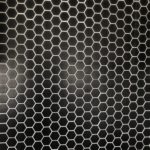Expert Guidance for Choosing the Ideal Bathroom Tiles: When embarking on your bathroom renovation, it is essential to prioritise porcelain tiles for flooring, as they provide exceptional durability and moisture resistance. Take the time to carefully examine the thickness of your tile selections to ensure they are suitable for both wall and floor applications. Consistency across tile batches is crucial for achieving a cohesive look, and assessing slip ratings is necessary to ensure safety in your bathroom environment. Moreover, effective budget management is paramount; focus on feature areas to create a visually stunning impact while controlling labour costs by opting for standard-sized tiles.
Choosing the appropriate tiles for a bathroom renovation can often seem overwhelming due to the vast array of options available. With an extensive selection of designs in muted tones such as white, beige, and grey, distinguishing between them can be quite challenging, particularly when price points vary widely.
Understanding the intricacies of tile pricing along with the critical factors that influence your selection process will empower you to make well-informed decisions. This knowledge is instrumental in avoiding expensive errors, saving money, and achieving a luxurious, polished finish in your bathroom, ultimately enhancing both the aesthetic appeal and value of your home.
This comprehensive guide provides invaluable insights specifically tailored for Brisbane homeowners, ensuring that you can make astute, budget-conscious choices when selecting bathroom tiles that not only meet your design objectives but also align with your financial constraints.

Exploring the Complexities of Tile Pricing: Essential Factors to Consider
Assessing Material Composition for Enhanced Longevity and Value
Porcelain tiles are highly regarded for their dense structure, lower porosity, and remarkable durability compared to conventional ceramic tiles. These tiles are produced from finer clays and undergo higher firing temperatures, resulting in superior resilience, which generally corresponds with a higher price point.
In bathrooms, where exposure to moisture and durability are paramount, selecting porcelain tiles typically represents a wise investment choice. However, it is worth noting that ceramic tiles have seen significant advancements in recent years, presenting budget-friendly alternatives that are well-suited for wall installations and areas with minimal foot traffic.
The Influence of Tile Manufacturing Techniques on Quality and Cost
The quality of bathroom tiles is influenced not only by their material composition but also heavily relies on the manufacturing methods employed.
Single-fired tiles are often more affordable but may lack consistency in quality, while double-fired tiles boast richer finishes, vibrant colours, and enhanced durability, making them a worthwhile investment for those who prioritise quality in their renovations.
Tiles featuring rectified edges are precisely cut using advanced machinery, ensuring uniformity in size and shape. Although these tiles may come with a higher price tag, they facilitate minimal grout lines, resulting in a seamless and modern aesthetic that is highly sought after by discerning homeowners.
Recognising the Importance of Tile Thickness for Optimal Structural Integrity
When selecting tiles, it is essential to understand that flooring tiles must be thicker and more robust than those designed for wall applications.
For example, wall tiles usually range from 6 to 8mm in thickness, while floor tiles typically measure between 8 and 12mm.
- Wall tiles generally have a thickness of 6–8mm.
- Floor tiles typically range from 8–12mm thick.
Investing in thick, heavy-duty tiles when only wall coverage is necessary can lead to unnecessary expenses. Matching tile thickness to the specific application is crucial for maximising your budget effectively and ensuring the longevity of your bathroom surfaces.
Balancing Brand Reputation with Material Quality in Tile Selection Decisions
Branding in the tile industry can often lead to inflated prices without a corresponding increase in quality.
Renowned European brands such as Porcelanosa and Marazzi frequently command premium prices primarily based on their reputation rather than the actual quality of their products.
Renovators in Brisbane should focus on the genuine quality of materials, the firing methods employed, and slip resistance ratings rather than solely relying on brand names when making their tile selections, thus ensuring a more informed purchasing decision.

Effective Strategies for Maximising Your Tile Budget: Achieving Quality Within Financial Constraints
By making thoughtful and strategic choices, you can achieve a sophisticated aesthetic for your bathroom without exceeding your budgetary limits. Below are practical strategies to optimise your tile spending and achieve an impressive renovation.
Mix Premium and Standard Tiles:
Incorporate high-end feature tiles on a focal wall or within specific niches while using more affordable tiles in less visible areas. This balanced approach allows for a luxurious appearance without overspending, merging aesthetics with cost-effectiveness.
Choose Larger Format Tiles:
Larger tiles, such as those measuring 600x600mm, cover more surface area and reduce the number of grout lines. This not only creates an illusion of spaciousness in smaller bathrooms but also reduces labour expenses due to quicker installation times.
Select Standard Sizes:
Opting for non-standard tile sizes can significantly increase both purchasing and installation costs. By choosing standard sizes, you ensure savings and simplify the installation process, making your renovation more efficient and cost-effective.
Look for Clearance or End-of-Run Stock:
High-quality tiles are often available at discounted prices during the final stages of production runs. Purchasing discontinued tiles can lead to substantial savings, but always remember to buy an extra 10–15% for future repairs or replacements.
Prioritise Durable Tiles for Floors and High-Traffic Areas:
Allocate a larger portion of your budget towards tiles for flooring and wet zones where durability is critical. In contrast, utilise cost-effective options in dry or low-traffic spaces to maintain overall affordability while ensuring quality where it matters most.
Identifying Key Distinctions in Tile Quality: What to Look For
While many bathroom tiles may appear similar at first glance, significant differences exist beneath the surface that can greatly influence your renovation experience and long-term satisfaction with your choices.
Shade Consistency:
Inexpensive tiles often exhibit inconsistencies in colour across different batches. Always verify batch numbers before making a purchase to avoid mismatched tiles that could disrupt your carefully planned design.
Quality of Glazing:
Lower quality glazes are prone to chipping and staining more rapidly, detracting from the overall aesthetic of your bathroom. High-quality glazing is resistant to scratches and absorbs less moisture, which is particularly crucial in wet areas like showers.
Porosity Levels:
Highly porous tiles can lead to water ingress and cracking over time, a common issue with cheaper ceramics that can result in costly repairs. Choosing tiles with lower porosity will enhance the durability and longevity of your surfaces, ensuring they stand the test of time.
Slip Resistance Ratings:
Bathroom floor tiles should meet or exceed an R10 slip resistance rating according to Australian standards, ensuring safety in wet conditions and preventing accidents that could lead to injuries or costly liabilities.
Neglecting to assess these essential factors can turn what appears to be a straightforward tile choice into a potentially costly repair and replacement situation, making it vital to consider quality alongside aesthetics in your decision-making process.
Assessing the Financial Impact of Grout Selection on Your Tiling Project
While the choice of tiles establishes the overall aesthetic for your bathroom, the selection of grout is equally essential, as it directly influences durability, visual appeal, and maintenance requirements of your tiling project. Making the right grout selection can significantly enhance the longevity of your installation and maintain its beauty over time.
Understanding Grout Costs and Material Types for Your Bathroom
Standard Budget Grout:
Traditional cement-based grouts are affordable and suitable for low-moisture environments. However, they are porous and may discolour or crack over time, especially in showers and high-traffic areas of the bathroom where moisture exposure is frequent. This can lead to ongoing maintenance challenges.
Premium Grout Options:
Grouts that are either epoxy-based or modified with polymers are resistant to stains, cracking, and moisture absorption. Although their initial costs may be higher, they often lead to long-term savings due to reduced maintenance and repair requirements.
Premium grout options also offer vibrant, enduring colours that maintain their brilliance even with regular use, ensuring your bathroom retains its aesthetic appeal for years to come.
Understanding the Financial Implications of Tile Size on Grout Expenses: A Comprehensive Overview
Smaller tiles require a greater amount of grout, impacting both material costs and labour during installation. Understanding this can help you make more informed budgeting decisions for your renovation project, ensuring you allocate your funds effectively.
- Mosaic and small-format tiles demand significantly more grout, not only in terms of volume but also in increased labour costs during installation.
- Large-format tiles (600x600mm or larger) minimise grout lines, resulting in lower material and labour expenses, making them a cost-effective choice for many homeowners.
If you opt for smaller tiles for aesthetic reasons—such as penny rounds or subway patterns—be sure to budget for premium grout. The visibility of grout lines elevates the need for a durable, stain-resistant product to ensure the longevity and aesthetic quality of your installation.

Your Comprehensive Tile Purchasing Checklist for Successful Bathroom Renovations
- Prioritise porcelain tiles for flooring and wet zones to ensure maximum durability and performance, safeguarding your investment.
- Select ceramic tiles for walls where applicable, as they offer cost-effective solutions without compromising quality, ensuring a well-rounded design.
- Confirm tile thickness based on the intended installation area to guarantee structural integrity and longevity, preventing future issues.
- Verify batch consistency to avoid colour mismatches that can disrupt your overall design and aesthetic vision, preserving the harmony of your space.
- Check slip ratings for bathroom flooring to ensure safety in wet areas, thereby safeguarding against potential accidents and liabilities.
- Invest in high-quality tiles for floors and splash zones where durability is essential to withstand daily wear and tear, ensuring long-term satisfaction.
- Be strategic with your budget: allocate funds wisely, focusing on areas that provide visual interest and impact while remaining within your financial limits.
Feel free to reach out to us for more innovative tiling ideas that can help keep your bathroom renovation within budget while ensuring style, functionality, and enduring beauty.
The Article: Tile Selection to Maintain Your Bathroom Renovation Budget first appeared on https://writebuff.com
The Article Tile Selection for a Budget-Friendly Bathroom Renovation Was Found On https://limitsofstrategy.com
The Article Budget-Friendly Bathroom Renovation: Tile Selection Tips found first on https://electroquench.com

